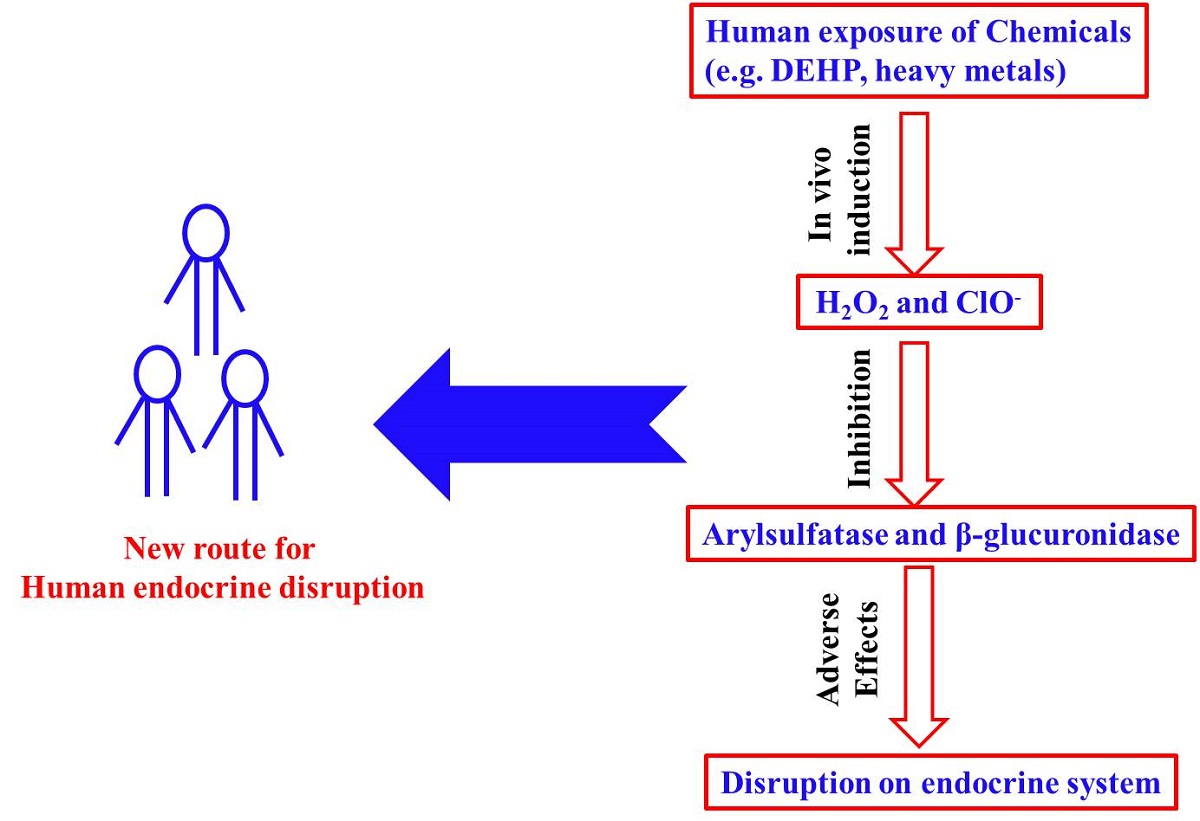Arylsulfatase and β-glucuronidase are two important enzymes in human, which play important role on dynamic equilibrium of steroidal estrogens. This work probably for the first time reported that hydrogen peroxide (H2O2), hypochlorite and peracetic acid (PAA) could effectively inhibit the activities of arylsulfatase and/or β-glucuronidase. The 50 percent of inhibitions (IC50) of H2O2, and PAA on arylsulfatase were found to be 142.90±9.00, 91.83±10.01, and 43.46±2.92 μM, respectively. The corresponding respective IC50 of hypochlorite and PAA on β-glucuronidase were 704.90±41.40 and 23.26±0.82 μM, while H2O2 showed no inhibition on β-glucuronidase. It was further revealed that the inhibition of hypochlorite on both arylsulfatase and β-glucuronidase was irreversible. On the contrary, the inhibition by H2O2 and PAA was reversible. Moreover, it was found that the inhibitions of arylsulfatase and/or β-glucuronidase by these three chemicals were pH-dependent, among which the inhibition by H2O2 was competitive and non-competitive for PAA. In general, H2O2 and hypochlorite can be endogenously produced in human, which suggested that the two compounds are potential endocrine disruption compounds (EDCs) as they can cause endocrine disruption via inhibition of arylsulfatase and β-glucuronidase. This work further indicated that any agent that can induce production of H2O2 or hypochlorite in human is potential EDC, which explains why some EDCs with very weak or no estrogenic potency can cause endocrine disruption that confirmed in epidemiological studies.

